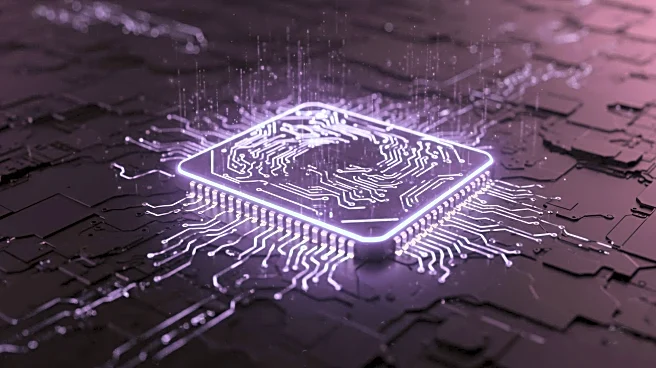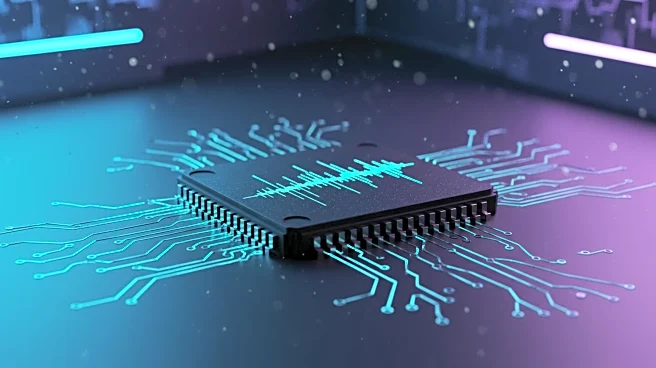What's Happening?
Cornell University researchers have unveiled a groundbreaking microchip, termed the 'microwave brain,' which integrates ultrafast data processing and wireless communication capabilities. This innovative chip, detailed in Nature Electronics, utilizes microwave physics to perform real-time computations such as radar tracking and signal decoding, consuming less than 200 milliwatts of power. The chip's design as a neural network allows it to recognize patterns and learn from data, bypassing traditional digital processing bottlenecks. The development was led by doctoral students Bal Govind and Maxwell Anderson, under the guidance of professors Alyssa Apsel and Peter McMahon. The chip's ability to handle data streams in the tens of gigahertz positions it as a potential game-changer in hardware security and edge computing applications.
Why It's Important?
The introduction of the 'microwave brain' microchip marks a significant advancement in microchip technology, offering a new approach to data processing that could revolutionize various industries. Its low power consumption and high-speed processing capabilities make it ideal for applications in hardware security and edge computing, potentially reducing reliance on cloud servers. This development could lead to more efficient and secure communication systems, benefiting sectors such as telecommunications and defense. The chip's scalability and adaptability suggest it could be integrated into existing microwave and digital processing platforms, paving the way for future innovations in computational efficiency.
What's Next?
The researchers are optimistic about the scalability of the 'microwave brain' microchip and are exploring ways to enhance its accuracy and integration into current processing platforms. Future developments may focus on reducing power consumption further, enabling deployment in portable devices like smartwatches and smartphones. Continued support from agencies like the Defense Advanced Research Projects Agency and the Cornell NanoScale Science and Technology Facility will likely drive further advancements, potentially leading to widespread adoption in various technological applications.











